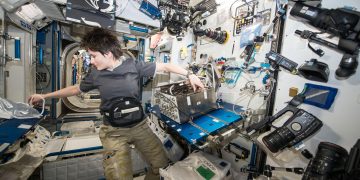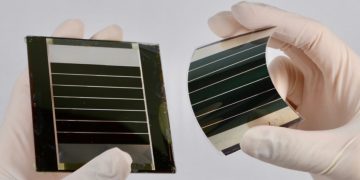Exploring the ambitious quest to reshape the Red Planet—and how it might reshape humanity in return.
Introduction
Since the dawn of space exploration, Mars has tantalized scientists and dreamers alike. Its rusty red surface, whispering of ancient rivers and buried ice, beckons humanity with promises of new frontiers and survival beyond Earth. Yet, Mars is no Eden; its atmosphere is thin, its temperatures brutal, and radiation levels perilous. To live there as we do here, we’d need to terraform—to transform Mars into a world capable of supporting Earth-like life.
But can we truly terraform Mars? Or, in trying to conquer this alien world, might we find ourselves changed irrevocably—terraforming not Mars, but humanity itself? This article delves into the scientific, technological, and philosophical dimensions of terraforming Mars, weaving a tale that is as much about human ambition as about planetary engineering.
The Challenge of Terraforming Mars: An Overview
What is Terraforming?
Terraforming means modifying a planet’s environment to make it habitable for Earth life. For Mars, this involves thickening the atmosphere, raising surface temperatures, creating liquid water bodies, and developing a protective magnetic field to shield life from cosmic radiation.
Mars’ current conditions present formidable challenges:
- Atmosphere: Less than 1% of Earth’s atmospheric pressure, mostly carbon dioxide.
- Temperature: Average surface temperature about -63°C, with extremes from -140°C to 20°C.
- Radiation: No global magnetic field means surface radiation is intense.
- Water: Mostly locked in ice; liquid water is unstable on the surface.
Why Terraform Mars?
Mars is the best candidate for terraforming because it shares several similarities with Earth:
- Length of day (~24.6 hours)
- Presence of polar ice caps
- Evidence of ancient liquid water
- A day-night cycle similar to Earth’s
Terraforming Mars could:
- Provide a backup for humanity in case of Earth catastrophes.
- Serve as a proving ground for large-scale planetary engineering.
- Spur technological innovation and human unity.

Step 1: Thickening the Atmosphere
The first step in terraforming Mars is increasing atmospheric pressure to allow liquid water to exist stably. Scientists propose several methods:
Releasing Greenhouse Gases
Mars’ atmosphere is 95% CO₂, but too thin to retain heat. The goal is to release more greenhouse gases to trap solar energy and warm the surface.
- Sublimating Polar Ice Caps: Mars has frozen CO₂ ice caps. Heating them (using orbital mirrors or black dust) could release CO₂ gas, thickening the atmosphere.
- Importing Volatiles: Comets or asteroids rich in water and ammonia could be redirected to impact Mars, releasing gases and water vapor.
- Artificial Production: Genetically engineered microbes could produce methane and other greenhouse gases.
The Time Scale
Estimations for this step range from centuries to millennia. The slow pace is due to Mars’ weak gravity and lack of a magnetic field, which allows gases to escape into space.
Step 2: Warming the Planet
A thicker atmosphere can trap heat, but additional warming strategies might be necessary:
Orbital Mirrors
Massive mirrors placed in Mars’ orbit could reflect sunlight onto polar caps, accelerating ice sublimation.
Darkening the Surface
Spreading dark material over ice caps could reduce albedo (reflectivity), absorbing more heat.
Artificial Greenhouse Gases
Super greenhouse gases, like perfluorocarbons (PFCs), could be manufactured to enhance warming.
Step 3: Water and Hydrology
Melting Ice Reserves
Mars holds significant ice beneath its surface and at poles. Warming would release water, creating rivers, lakes, and potentially oceans.
Water Recycling
Engineered ecosystems would need to recycle water efficiently, as Mars has no large natural replenishment cycles.
Challenges
Without a strong magnetic field, solar wind can strip away water vapor. Technologies or strategies to protect water reservoirs will be crucial.
Step 4: Creating a Magnetic Field
Earth’s magnetic field shields life from harmful solar and cosmic radiation. Mars lost its magnetic field billions of years ago, leading to atmospheric loss.
Proposed Solutions
- Artificial Magnetosphere: A magnetic shield placed at Mars’ L1 Lagrange point to deflect solar wind.
- Reactivating Mars’ Core: Theoretically stimulating the planet’s molten core to reignite its dynamo effect (currently speculative).
Without such protection, surface life would suffer lethal radiation doses.
Step 5: Introducing Life
Microbial Pioneers
Extremophiles (microbes thriving in harsh conditions) could jump-start ecosystems, gradually altering the atmosphere.
Plants and Algae
Photosynthetic organisms could convert CO₂ into oxygen, eventually supporting more complex life forms.

The Real Question: Could We Terraform Mars—or Would It Terraform Us?
Terraforming Mars is not merely a technical challenge; it is a profound human experiment with unpredictable consequences.
The Psychological and Social Terraforming of Humanity
The Martian Mindset
Living on Mars, even in domes or early settlements, would transform human psychology. Isolation, confinement, and dependence on technology could foster resilience, but also mental health challenges.
Societal Evolution
Mars colonies might develop unique cultures, governance, and identities—perhaps diverging significantly from Earth norms.
Ethical and Philosophical Questions
Should We Terraform?
Mars is a world with its own geological history and perhaps undiscovered life. Is it ethical to alter it irrevocably for human purposes?
Ownership and Rights
Who owns Mars and its future? How do we balance private ambitions with collective heritage?
The Technological Ripple Effects
Terraforming technologies could revolutionize energy, materials science, and environmental management on Earth.
- Carbon capture and greenhouse gas manipulation
- Advanced bioengineering
- Space infrastructure development
The Risk of “Terraforming” Humanity
In attempting to mold Mars, we may change human biology and society in fundamental ways:
- Genetic Modification: To survive Mars’ radiation and gravity, humans may require genetic enhancements.
- Social Structures: Dependency on life-support systems could alter social dynamics and individual freedoms.
- Philosophical Identity: Mars colonists may redefine what it means to be human.
The Vision Ahead: Mars as a Mirror and a Frontier
Terraforming Mars is a metaphorical journey as much as a physical one. It holds up a mirror to human ambition, resilience, and adaptability. Will we conquer Mars, or will the Red Planet lead us to transform ourselves into something new?
Conclusion
Terraforming Mars is a monumental challenge, both technically and ethically. While we have the rudiments of the science and engineering needed, the endeavor will require centuries of work, vast resources, and profound reflection on humanity’s place in the cosmos.
As we stand on the cusp of becoming a multi-planetary species, the question is not only whether we can terraform Mars—but how Mars will terraform us in the process.


















































Discussion about this post